Expedition Diary
Archived Posts from this Category
Archived Posts from this Category
The President of Iceland, Gudni Johanneson and Johann Sigurdson met a couple of days ago in Winnipeg. Johann briefed him on the plans for the Fara Heim expedition.

0 comments Friday 24 May 2019 | David | Expedition Diary
Here’s an article that just came out in the Chicago Booth Magazine.
0 comments Monday 29 Jan 2018 | David | Expedition Diary
Darwin Monita joins the Fara Heim team as an Advisor. He and his company will lead the search activity in Phase 2 of the Battle of Hudson Bay expedition. Darwin has over 30 years of commercial survey experience and has a MSc, Aquatic Ecology, from the University of Calgary. Aquatics Environmental Services, located in Winnipeg, will provide the on-water search vessels and gear to use magnetometer and side scan sonar (static and multi-beam) to evaluate the locations identified by the airborne magnetometer activity in Phase 1.
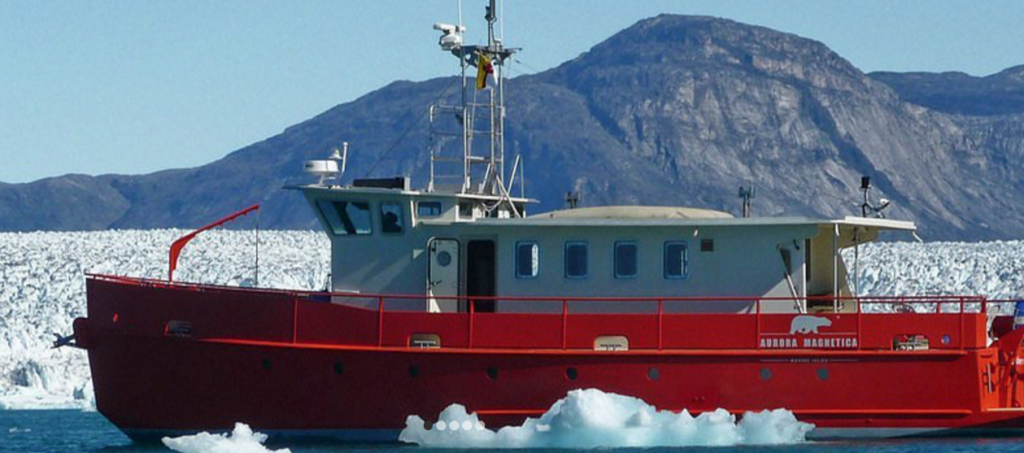


0 comments Wednesday 31 May 2017 | David | Expedition Diary
Here’s information on Fara Heim’s Battle of Hudson Bay expedition. The main objective right now is to develop a public/private relationship with the Canadian Government and Parks Canada as without a permit we can’t even look. Once we have the permit we then need to raise the money to get into the field.
Fara Heim Foundation_BOHB 1697_HMS Hampshire2017
0 comments Sunday 08 Jan 2017 | David | Expedition Diary
The two Johanns flew to Hudson Bay this week to take a look at the clarity of the water and vegetation growth. In conversation with locals that have lived up there for 60+ years we were told that Hudson Bay is much clearer before the winter snow melts and the Nelson and Hayes rivers start to dump silt into the Bay. We were also told you can see things on the ground better before the leaves come out and the grass grows.
As part of the preparation for our Explorers Club flag expedition they flew to Nanuk Lodge via Gillam and Winnipeg. The owners of Nanuk Lodge, Churchill Wild Polar Bear Tours, let us use the runway and a cabin. The tourist season hasn’t started yet and there was nobody there.
They used a high resolution video camera to test taking images of the ground for later analysis, walked over the tidal flats and through some rivers, and flew over York Factory (which is still uninhabited from the winter closure). The ice is still on Hudson Bay and it will take months for the Hudson Strait to open up.

The tidal flats of Hudson Bay
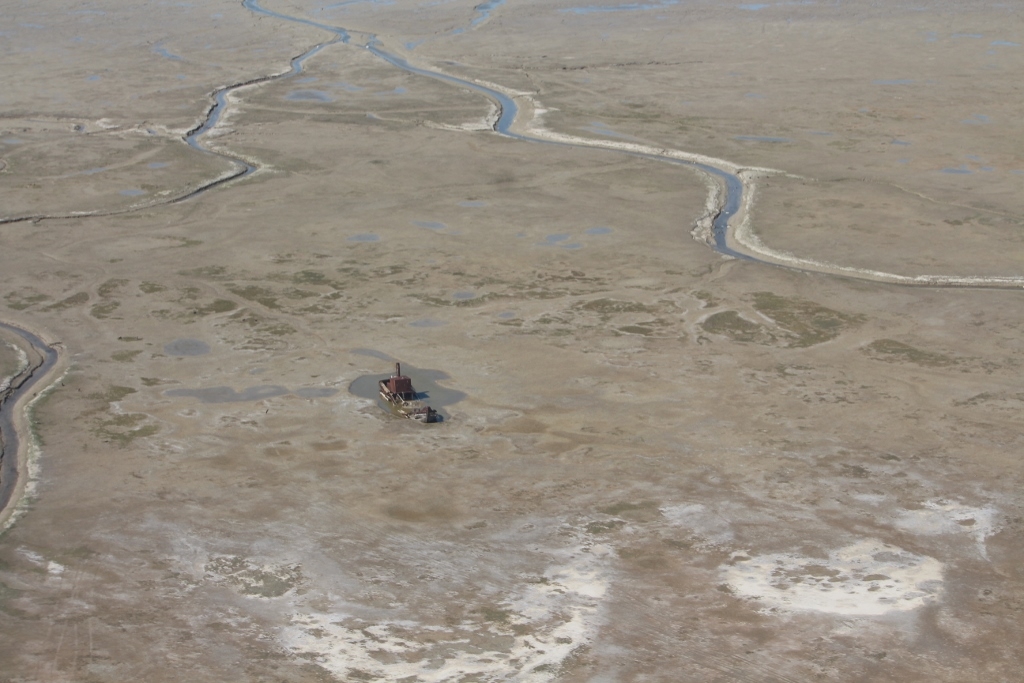
A shipwreck on the tidal flats of Hudson Bay

The ground near Nanuk Lodge on Hudson Bay
0 comments Tuesday 31 May 2016 | David | Expedition Diary
Dr. Ken is Fara Heim’s first Life Member. Dr. Thorlakson went to university to study Medicine at the University of Manitoba in 1943. He has Viking blood in him as he interrupted his studies to join the Royal Canadian Navy with subsequent North Atlantic convoy duty during World War II. Graduation in 1949 was followed one year later by postgraduate surgical training in Britain where he obtained a fellowship in the Royal College of Surgeons. Joining the Winnipeg Clinic in 1956, he began a practice in General Surgery at Winnipeg General Hospital (now the Health Sciences Centre) and later at Victoria General Hospital. He was an Associate Professor of Surgery at the University of Manitoba. He was installed as a Knight of the Icelandic Order of the Falcon by the President of Iceland, Ólafur Ragnar Grímsson, in Winnipeg on August 2, 2000, during the President’s State visit to Canada.
Fara Heim greatly appreciates Dr. Ken’s involvement with Fara Heim.

0 comments Wednesday 13 Apr 2016 | David | Expedition Diary
Click here to read Birgitta Wallace’s paper on Leif Eriksson’s Home in Vinland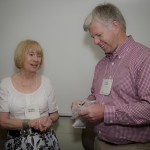

Birgitta Wallace sent this to us today. David had met with her two years ago at the Association for the Advancement of Scandinavian Studies in Canada conference at Brock University. It’s a great paper on the Sagas. Birgitta met with Dr. Parcak and the archaeology team last summer to review the data from the site at Point Rosee.
0 comments Sunday 03 Apr 2016 | David | Expedition Diary
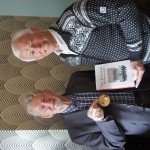

Pall and Navigation Tool

SONY DSC
Here is Johann Sigurdson talking with Páll Bergþórsson. Páll has written some books on pre-Columbian exploration with focus on how navigation was done.
http://icelandmonitor.mbl.is/…/discovery_of_new_viking_sit…/
https://www.facebook.com/p…/Páll-Bergþórsson/100000022629269
0 comments Sunday 03 Apr 2016 | David | Expedition Diary
If you haven’t heard an archaeology team used satellite images and a ground search last summer to find a previously unknown site in Newfoundland. It isn’t claimed to be a Viking-age site but it sure has some compelling evidence. Dr. Parcak, recent winner of the 2016 TED prize of $1 million, her husband, Dr. Greg Mumford, and Dr. Doug Bolender also developed a NOVA special that is coming out this week.
Here are some links to articles.
Dr. Greg Mumford – Academia.edu site with research notes and articles
1 comment Sunday 03 Apr 2016 | David | Expedition Diary
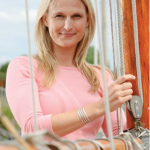
Dr. Kimberly Monk, of the University of Bristol, reached out to us after seeing a posting on a maritime archaeology group on LinkedIn. Dr. Monk, originally of Canada and now residing in the U.K., has done a lot of research on the Battle of Hudson Bay. She has a special fondness for “Soggy Dames”, also known as sunken ships, and has done several maritime archaeology projects. Her most recent focus in researching timbers used in ships.
Nothing fascinates Kimberly Monk more than a pile of soggy wood. It may not seem like a promising subject of study, but it has formed the basis of her career in the Department of Archaeology and Anthropology, where she is co-ordinator of the MA in Maritime Archaeology and History and lecturer for postgraduate and undergraduate units on maritime archaeology. The search for said dank and dripping data – shipwrecks, in other words – takes her to locations as diverse as the British Virgin Islands, the North American Great Lakes and the balmy waters off the south-western tip of the Cornish peninsula.
But don’t be fooled – reaching the shipwreck sites themselves often involves working in hazardous conditions. Monk is a veteran of the underwater world; a former professional diver, she admits to having swum against the prevailing current. ‘You usually start out as an archaeologist, develop your specialism and then learn how to dive to search out your investigation sites,’ she says. ‘I did things the other way round.’
Monk was born and raised in Toronto. Having shelved her original plans to pursue a degree in veterinary medicine, she was working as a scubadiving instructor when she came across some maritime archaeologists monitoring shipwrecks in the Fathom Five National Marine Park in Tobermory, Ontario. ‘I was fascinated by what they were doing – it was like underwater detective work,’ she says. ‘I was also interested in the conservation aspects of their work. As a diver, you’re very aware of the need to protect fragile environments.’
For all the interest generated by early adventurers such as Jacques Cousteau, and despite pioneering work in the 1960s by George Fletcher Bass, founder of the Institute of Nautical Archaeology, maritime archaeology was still an underdeveloped academic field as recently as the 1990s when Monk looked again at her academic options. ‘It took a while for maritime archaeology to shake off its early associations with treasure hunting,’ she says. She embarked on an archaeology degree at the University of Western Ontario and got her underwater fix by volunteering in her spare time for Save Ontario Shipwrecks, an organisation dedicated to the study and preservation of Ontario’s marine heritage. Thus began a love affair with the North American Great Lakes. ‘They’re ideal for exploration,’ says Monk. ‘They contain masses of wrecks because historically shipping was the predominant means of transport, even up until the early 20th century. Everything, from people and animals to food and building materials, was transported in wooden bulk carriers.’
After completing an MA in nautical archaeology at East Carolina University, Monk chose to pursue a PhD at Bristol, a move that put her ‘in the right place at the right time’ when the opportunity arose to co-ordinate the Maritime Archaeology Master’s programme.
It’s the human stories behind the findings that most interest Monk, especially when the humans have names like Pierre Le Moyne D’Iberville. Another British warship, HMS Hampshire, is Monk’s latest interest is the 1697 Battle of Hudson Bay. It’s the only naval battle to have taken place in Arctic waters. The Battle of Hudson’s Bay took place when a French warship defeated an English squadron to take York Factory, one of the Hudson’s Bay Company’s trading posts. ‘It wasn’t the most glorious epitaph for the English fleet, losing a 50-gun ship and a Hudson’s Bay Company ship along with the fort,’ says Monk. ‘But the loss of the French ship the following day would have been a consolation.’ We look forward to helping Dr. Monk learn more about the Battle of Hudson Bay up close.
(excerpt from University of Bristol, “Subtext”, 2009)
0 comments Tuesday 29 Mar 2016 | David | Expedition Diary
|